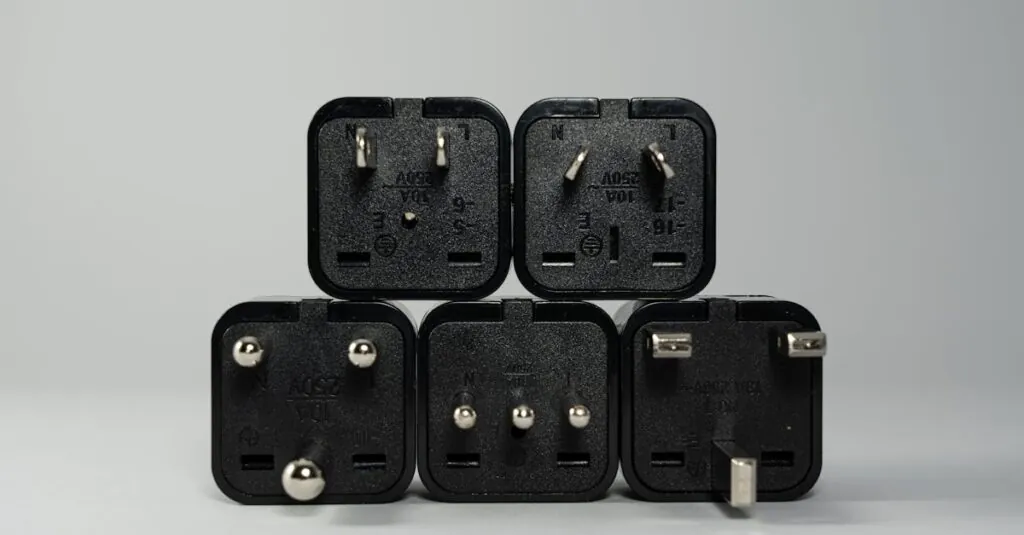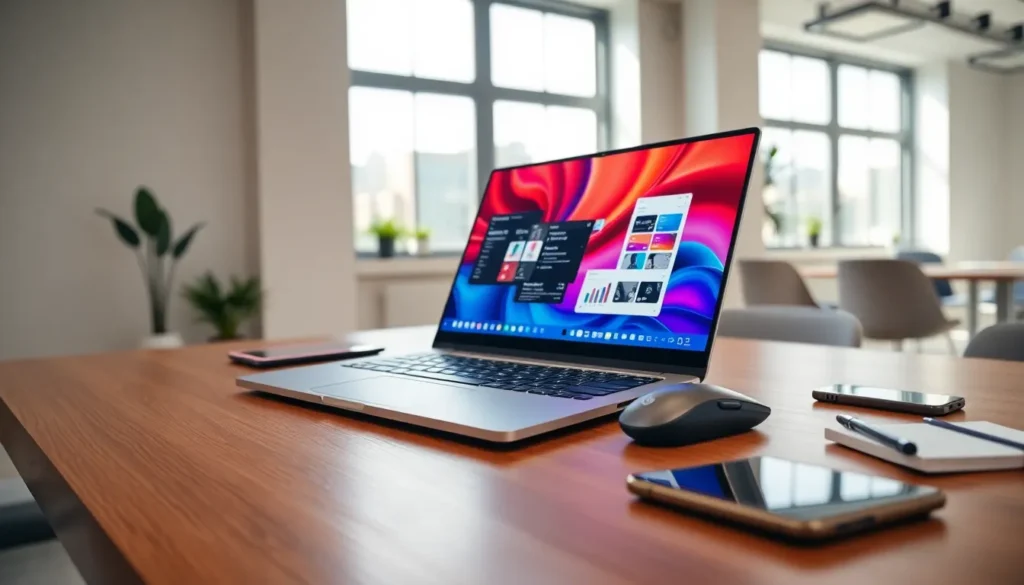Table of Contents
ToggleIn a world where smartphones have become an extension of ourselves, getting the right mobile device configuration can feel like trying to solve a Rubik’s Cube blindfolded. With countless settings and options, it’s easy to feel overwhelmed. But fear not! Mastering your mobile device is just a few taps away, and it can transform your daily life from chaotic to seamless.
Imagine breezing through your day with a device tailored to fit your unique needs. Whether it’s optimizing battery life for those marathon Netflix sessions or setting up security features to keep your secrets safe, the right configuration can make all the difference. So buckle up and get ready to unlock the full potential of your mobile device—because who wouldn’t want to be the tech-savvy friend everyone turns to for help?
Understanding Mobile Device Configuration
Mobile device configuration involves adjusting settings to enhance functionality and user experience. Understanding this process is key to maximizing device potential.
Definition and Importance
Mobile device configuration refers to modifying settings and options tailored to individual needs. This customization plays a critical role in optimizing performance and security. Users can streamline workflows by personalizing features, improving efficiency. Amidst diverse options, proper configuration helps unlock a device’s capabilities. A correctly configured device can enhance battery life, improve security measures, and simplify navigation. Attention to configuration details ensures users harness technology effectively while addressing specific requirements.
Common Configuration Settings
Common configuration settings include network connections, display preferences, and security options. Users typically adjust Wi-Fi and Bluetooth connections to ensure seamless connectivity. Display preferences may involve settings like brightness, orientation, and screen timeout adjustments. Security options are vital for safeguarding personal information; features such as biometrics and passcodes are essential. Additionally, users often customize notification settings for app management to prioritize alerts. These configurations significantly impact user experience and device efficiency, reflecting individual preferences and enhancing overall functionality.
Types of Mobile Device Configuration
Mobile device configuration encompasses various methods to optimize device performance and user preferences. Understanding these types helps users select the best approach for their needs.
Manual Configuration
Manual configuration allows users to adjust settings directly. By accessing system settings, individuals can customize options such as network connections, display brightness, and security preferences. For example, users may prefer a dark mode for improved readability in low light conditions. A step-by-step guide often assists in navigating these settings. This method suits those seeking complete control over their devices. Users gain full visibility into features, enabling tailored configurations based on personal workflows and usage patterns.
Automatic Configuration
Automatic configuration streamlines the setup process significantly. During device activation, settings can auto-adjust based on user habits and location data. For instance, when connecting to a known Wi-Fi network, specific preferences can adjust automatically to enhance connectivity. This method reduces manual input and saves time, appealing to users who value efficiency. In enterprise environments, IT administrators often deploy automatic configurations across multiple devices. Automated settings help maintain uniformity and compliance with organizational policies, ensuring devices remain secure and efficient.
Tools for Mobile Device Configuration
Configuring mobile devices effectively requires the right tools. Both configuration management software and mobile device management solutions play crucial roles in simplifying this process.
Configuration Management Software
Configuration management software helps streamline device settings across various platforms. Users can automate settings adjustments, which saves time and reduces errors. Solutions often include dashboards for visibility, allowing users to monitor configurations in real-time. Examples include Microsoft System Center Configuration Manager and Puppet. Each platform provides tools to manage software deployment and simplify updates, enhancing overall user experience.
Mobile Device Management (MDM) Solutions
Mobile device management solutions manage and secure mobile devices in organizational settings. These tools enable IT teams to configure settings remotely, ensuring compliance with policies. MDM solutions often include features like device tracking, application management, and security policy enforcement. Popular MDM tools comprise VMware Workspace ONE and Microsoft Intune. Each option provides distinct advantages for managing multiple devices, safeguarding sensitive data, and maintaining device functionality.
Best Practices for Mobile Device Configuration
Effective mobile device configuration enhances security and user experience. These practices boost device performance and overall satisfaction.
Security Considerations
Prioritizing security remains essential in mobile device configuration. Set strong passwords and enable biometric authentication methods like fingerprints or facial recognition. Regularly update the device’s operating system to protect against vulnerabilities. Implement encryption on sensitive data to prevent unauthorized access. Consider using mobile device management solutions to enforce security policies, making device management easier within organizations. Configure remote wiping capabilities, allowing users to erase sensitive data if a device is lost or stolen. Monitor user permissions to limit access to critical information and applications.
User Experience Optimization
Optimizing user experience through configuration enhances daily interactions with mobile devices. Customize the home screen layout by arranging apps based on frequency of use. Adjust display settings, such as brightness and font size, to improve readability. Enable notifications for essential applications while disabling non-critical alerts to reduce distractions. Organize folders for similar apps, helping users navigate quickly. Utilize battery-saving modes and adaptive brightness features to extend device life. Fine-tuning network settings can increase connectivity and overall responsiveness, delivering a seamless user experience.
Configuring mobile devices is essential for unlocking their full potential. By understanding the various settings and options available users can enhance their experience while optimizing performance and security. Whether opting for manual adjustments or leveraging automated tools organizations can achieve a streamlined setup that meets their specific needs.
Implementing best practices in security and personalization not only protects sensitive information but also improves daily usability. As technology continues to evolve staying informed about mobile device configuration will empower users to make the most of their devices. Embracing these strategies ensures a more efficient and enjoyable mobile experience.




